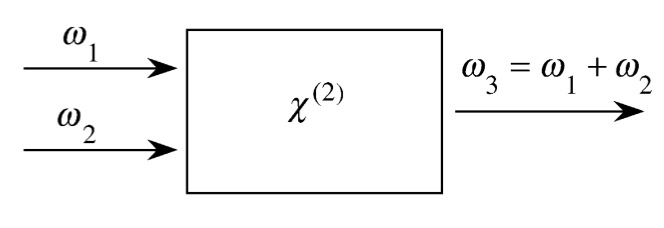Sum-frequency generation
 is easy for my to understand. Two photons combine their energies in a nonlinear medium and out comes one photon with the sum of both energies.
is easy for my to understand. Two photons combine their energies in a nonlinear medium and out comes one photon with the sum of both energies.
But Difference-frequency generation
 is harder for me. For one thing, I'm struck by where the extra energy went? Is it heating up the nonlinear medium?
is harder for me. For one thing, I'm struck by where the extra energy went? Is it heating up the nonlinear medium?
Is there a way for me to visualize this process that is similar to my understanding of the case of Sum-frequency generation?
